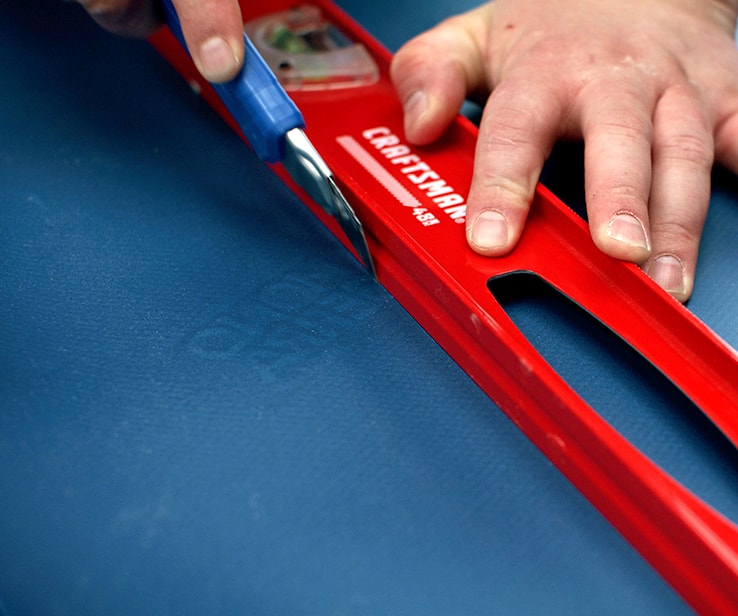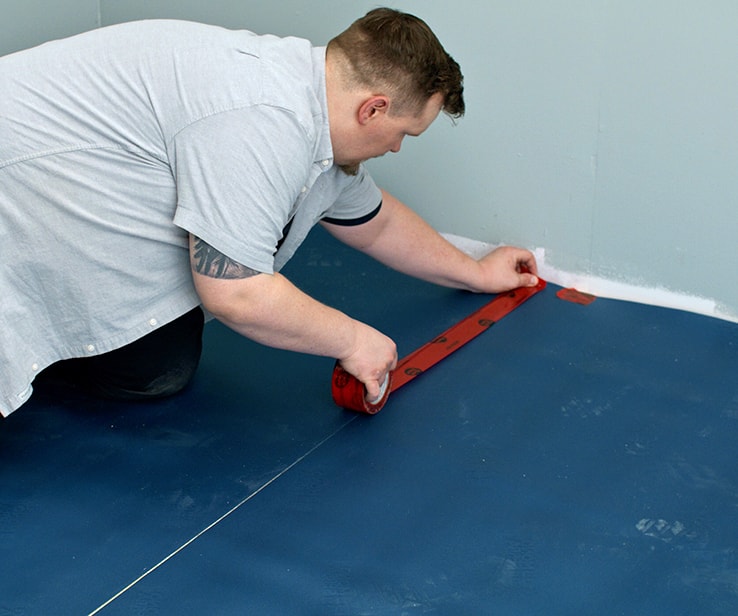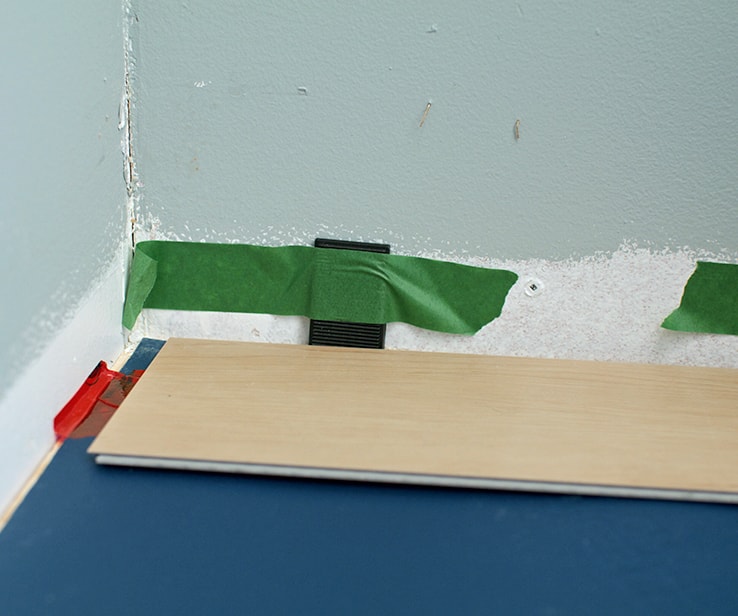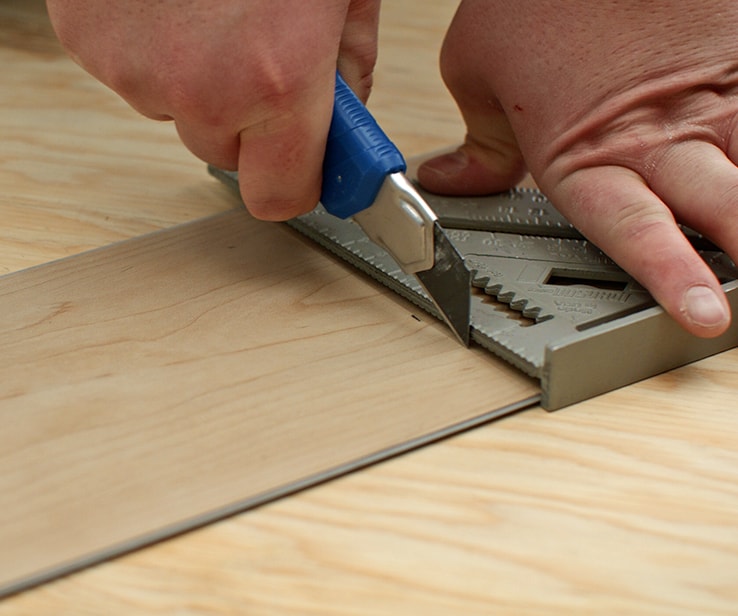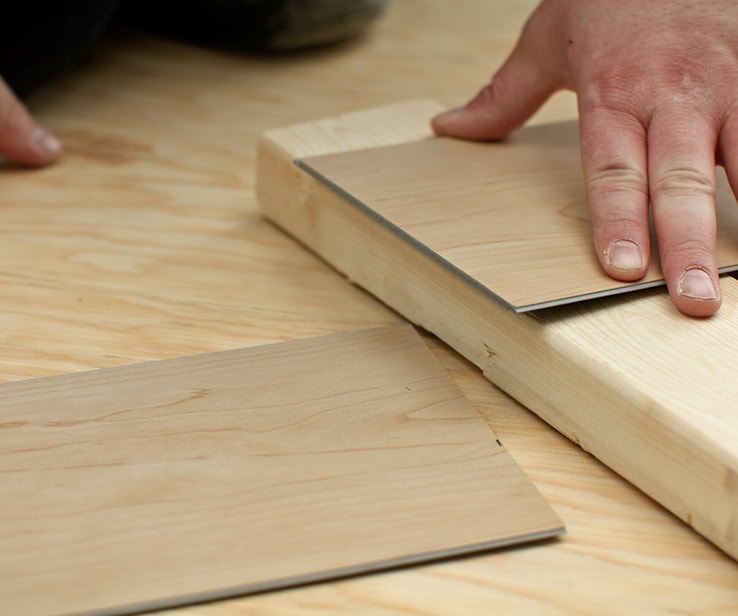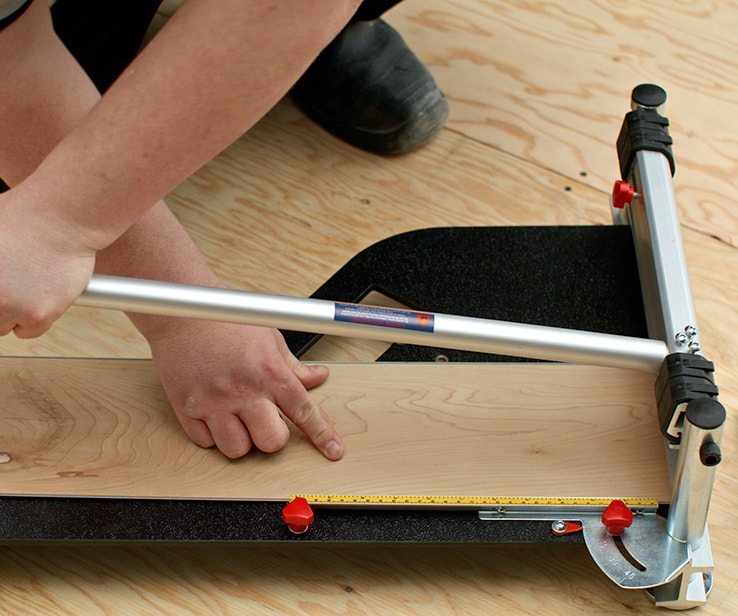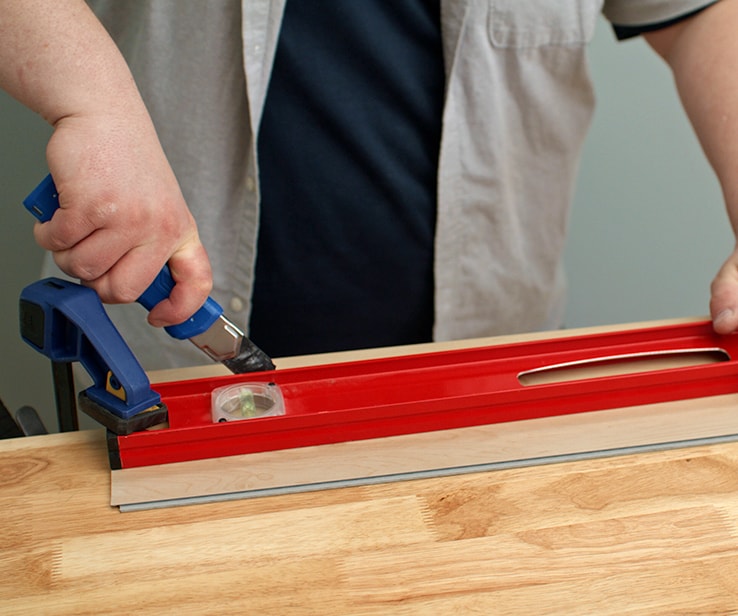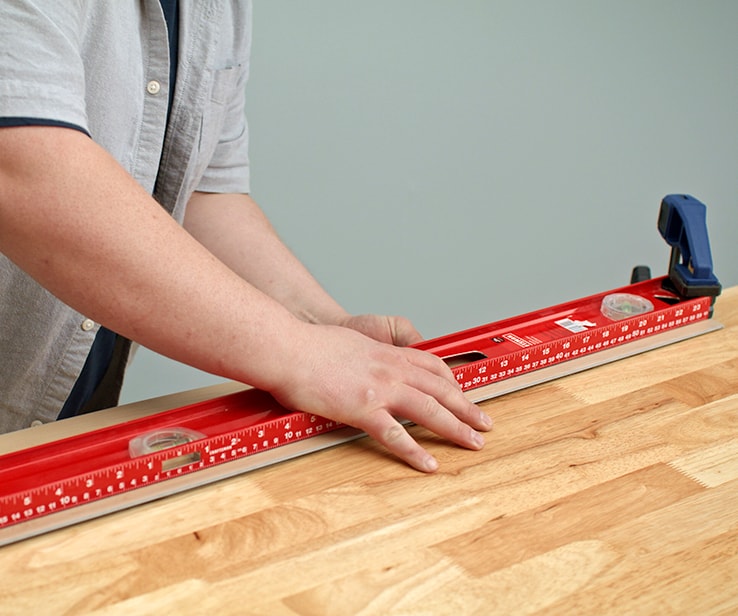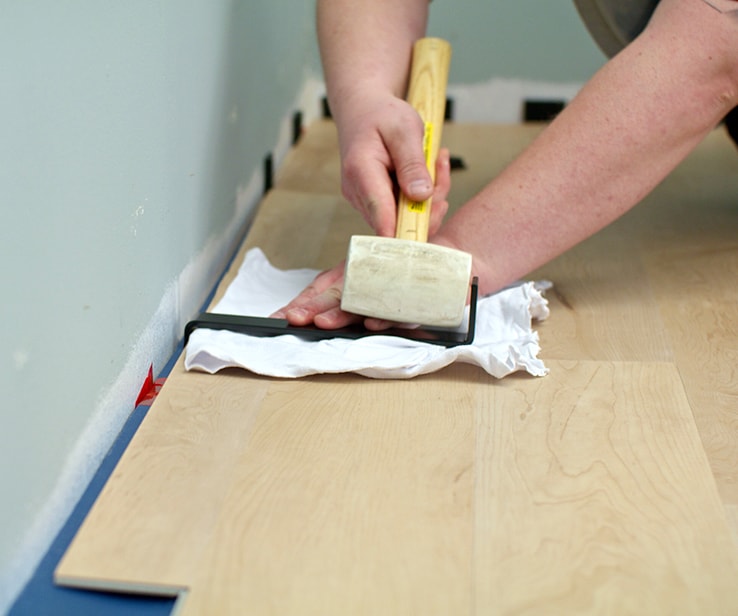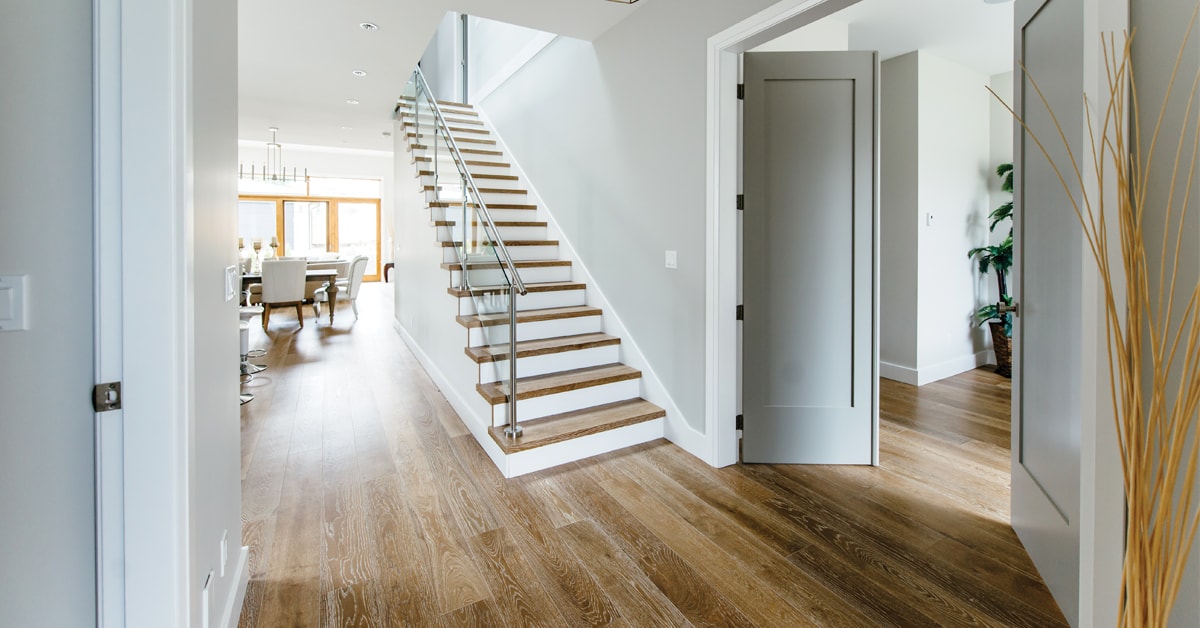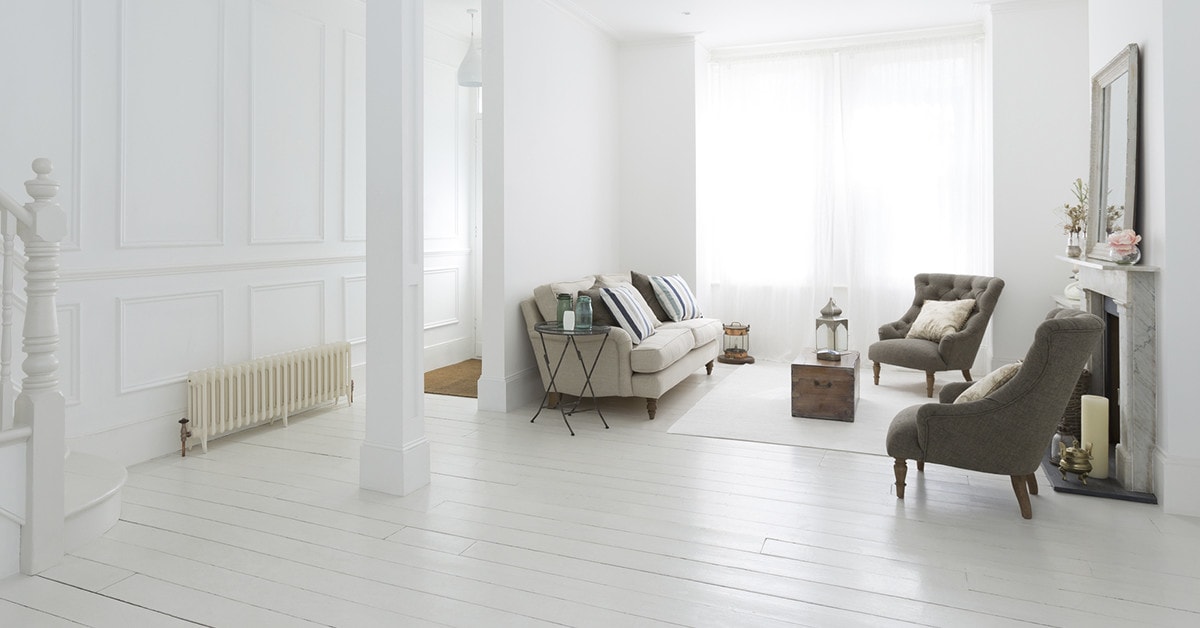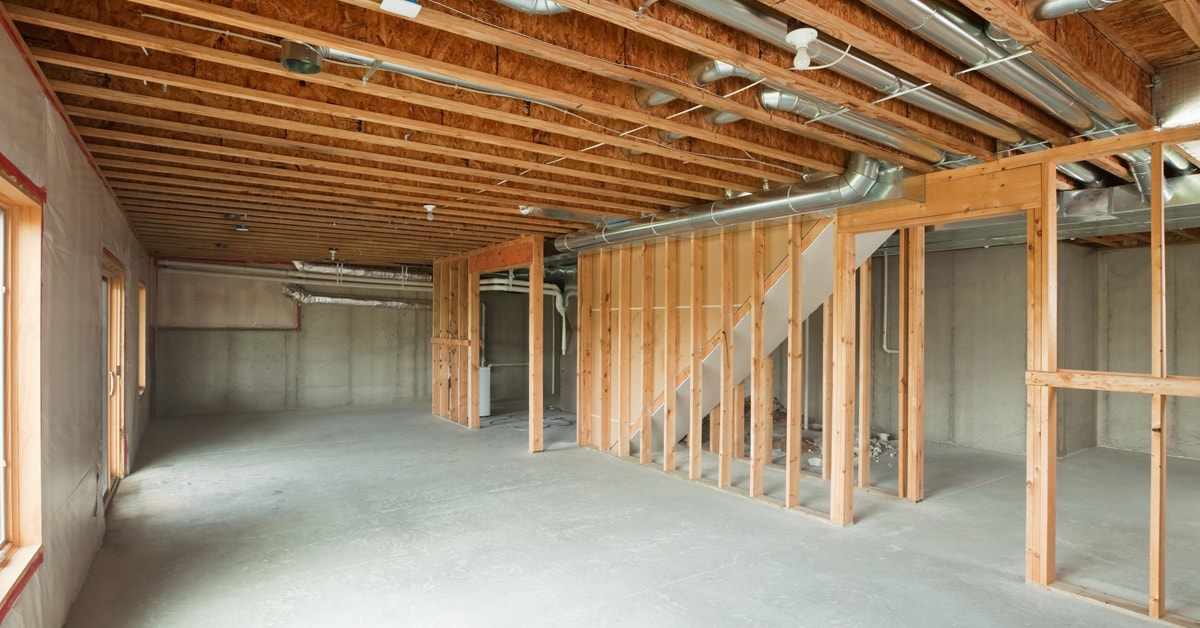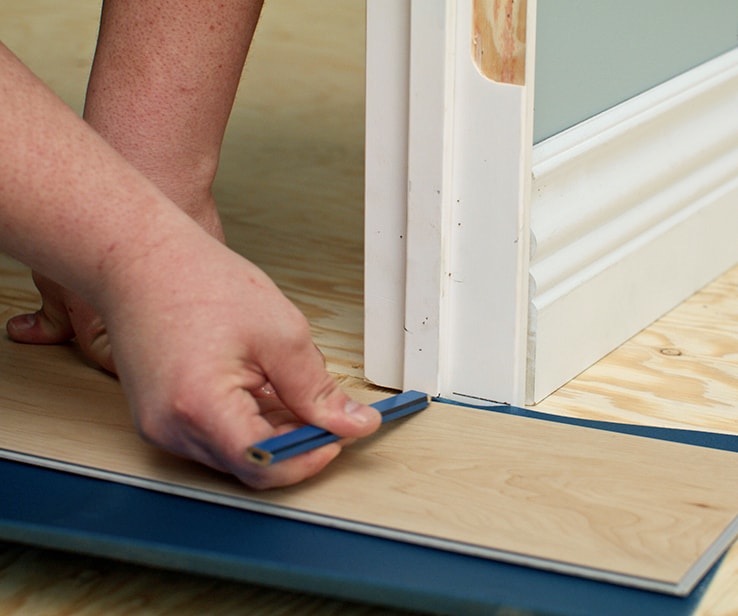
1Prepare the Room
- 1.1Start by removing the door and baseboards.
- 1.2Trim the door casing:
- Place a piece of underlayment and a plank flat on the floor beside the door casing and mark, with a line, where the casing needs to be cut so that the floor can fit underneath it.
- Cut the casing at the line.
- Test to see if the plank fits under the casing without being too tight.
- 1.3Use a workshop vacuum to remove any dust or debris.









